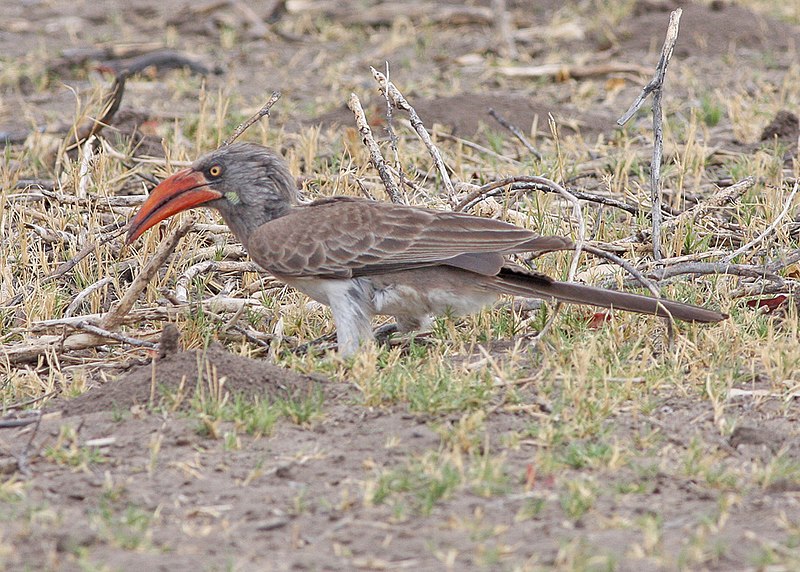West African Pied Hornbill Bird Details
Lophoceros semifasciatus
West African Pied Hornbill
NA
Karel Johan Gustav Hartlaub 1855
Bucerotiformes (HOOPOES and HORNBILLS)
Bucerotidae
Lophoceros
West Africa: Guinea, Sierra Leone, Liberia, Ivory Coast, Ghana, and Nigeria.
Appearance :
The West African Pied Hornbill is characterized by a distinctive black and white plumage. It has a black head and neck, with a white belly and underparts. The wings and tail are black with white markings. The bill is long and curved, typical of hornbills.
Behaviour :
These hornbills are generally seen in pairs or small family groups. They are known for their loud, trumpeting calls. They are cavity nesters, typically nesting in tree hollows.
Habitat :
They inhabit a variety of forested habitats including primary and secondary forests, as well as woodland areas.
Diet :
Their diet primarily consists of fruits, insects, and small animals like lizards and small birds.
Conservation Status :
Least Concern
Distribution :
They are found in West Africa, particularly in countries such as Guinea, Sierra Leone, Liberia, Ivory Coast, Ghana, and Nigeria.
Population Size :
Considered to be widespread and locally common within their range.
Life Span :
Around 20 to 30 years.
Body And Tarsus:
Compact and predominantly black with white markings.
Head And Bill :
Large yellow bill with a casque (horn-like structure) on top.
Length :
Approximately 50-60 cm (19.7-23.6 inches).
Neck :
Short and stout.
Size :
Medium-sized hornbill.
Tail Details :
Short and rounded.
Weight :
Typically around 250-300 grams (8.8-10.6 ounces).
Wing :
Broad wings suitable for short flights.
Wing Span :
Approximately 75-85 cm (29.5-33.5 inches).
Facial Feature :
Prominent casque (horn) on top of the bill.
Nest Details :
- Nest: Usually found in tree cavities.
- Nest made up of: Lined with leaves and other plant materials.
Breeding Season :
Usually during the wet season.
Nesting Season :
Typically from March to July.
Egg Color :
White or creamy white.
Egg Length :
Around 4-5 cm (1.6-2 inches).
Egg Width and Weight :
Around 3-4 cm (1.2-1.6 inches).
Clutch Size :
Usually 2-4 eggs per clutch.
No. of Broods :
Usually 1 brood per breeding season.
Incubation Period :
Approximately 25-30 days, mainly by the female.
Nestling Period :
Around 4-6 weeks until fledging.
Vocalization :
Loud, harsh calls; various grunts and cackles.
Sex Demorphism :
Males may be slightly larger with larger casques.
Migration Details :
Generally non-migratory birds.







